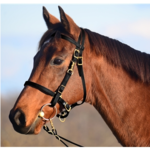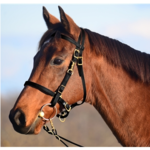yycyak
Lil-Rokslider
- Joined
- Apr 1, 2018
- Messages
- 267
I'm generally a newb when it comes to horses and horsemanship, with most of my experience being around ranch horses and that culture (as opposed to hunting-specific riding/packing.) With that in mind, I have what I'm sure is a dumb question:
I know you're not supposed to lead a horse around with the reins. So a lot of the western ranch horse guys run a "Get Down Rope", which to an uneducated guy like me, seems to be a small under-bridle thing that you run a rope through, and then bowline around the horse's neck. These same ranch guys frown hugely on running halters underneath a bridle. Big faux pas I guess.
But in looking at the Get Down Rope setup, vs a thin and lightweight rope halter, my uneducated brain looks at them both and says "They accomplish the same thing: leading a horse around using not-the-reins."
I get that in a cow pen or a show arena, this stuff probably matters. But when I'm out in the mountains, see a critter, and want to either dismount and walk or temporarily tie the horse up, does it really matter whether I'm running a $400 Get Down Rope contraption, vs a $14 thin rope halter? At the moment I'm inclined to run the rope halter, unless you smart guys here know something I don't.
(Wanted to add that I also wouldn't highline/trailer/long-term tie a horse up with a thin halter - I use a chunkier or flat halter for that.)
I know you're not supposed to lead a horse around with the reins. So a lot of the western ranch horse guys run a "Get Down Rope", which to an uneducated guy like me, seems to be a small under-bridle thing that you run a rope through, and then bowline around the horse's neck. These same ranch guys frown hugely on running halters underneath a bridle. Big faux pas I guess.
But in looking at the Get Down Rope setup, vs a thin and lightweight rope halter, my uneducated brain looks at them both and says "They accomplish the same thing: leading a horse around using not-the-reins."
I get that in a cow pen or a show arena, this stuff probably matters. But when I'm out in the mountains, see a critter, and want to either dismount and walk or temporarily tie the horse up, does it really matter whether I'm running a $400 Get Down Rope contraption, vs a $14 thin rope halter? At the moment I'm inclined to run the rope halter, unless you smart guys here know something I don't.
(Wanted to add that I also wouldn't highline/trailer/long-term tie a horse up with a thin halter - I use a chunkier or flat halter for that.)


